Revitalising a Landmark: The Redevelopment of the Sony Park Building in Tokyo
Written by Principal Architect Pablo Lambrechts, L+Architects, Friday 20th September 2024
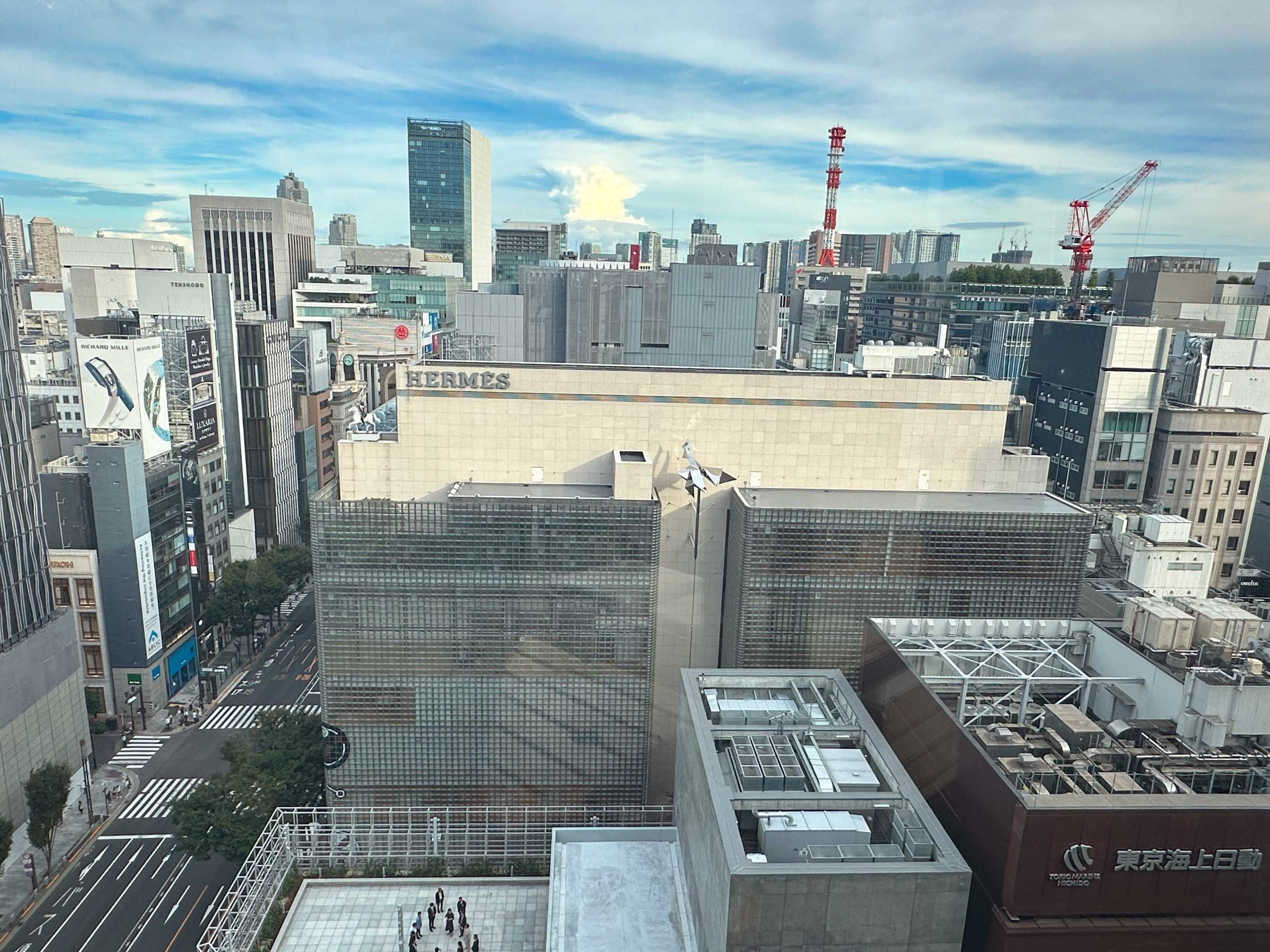
Tokyo thrives on blending tradition with innovation, and the redevelopment of the iconic Sony Park Building in the Ginza district is a testament to this dynamic spirit. Originally established in 1966 as the Sony Building, this landmark has undergone a transformative journey, reflecting Tokyo’s urban landscape’s evolving needs and aspirations.
I was impressed by the seamless integration of Yoshinobu Ashihara’s architectural vision from 1966 with the surrounding urban environment, the idea of the public spaces to integrate the more private ones, and the innovative ways in which the building invites public interaction and engagement.
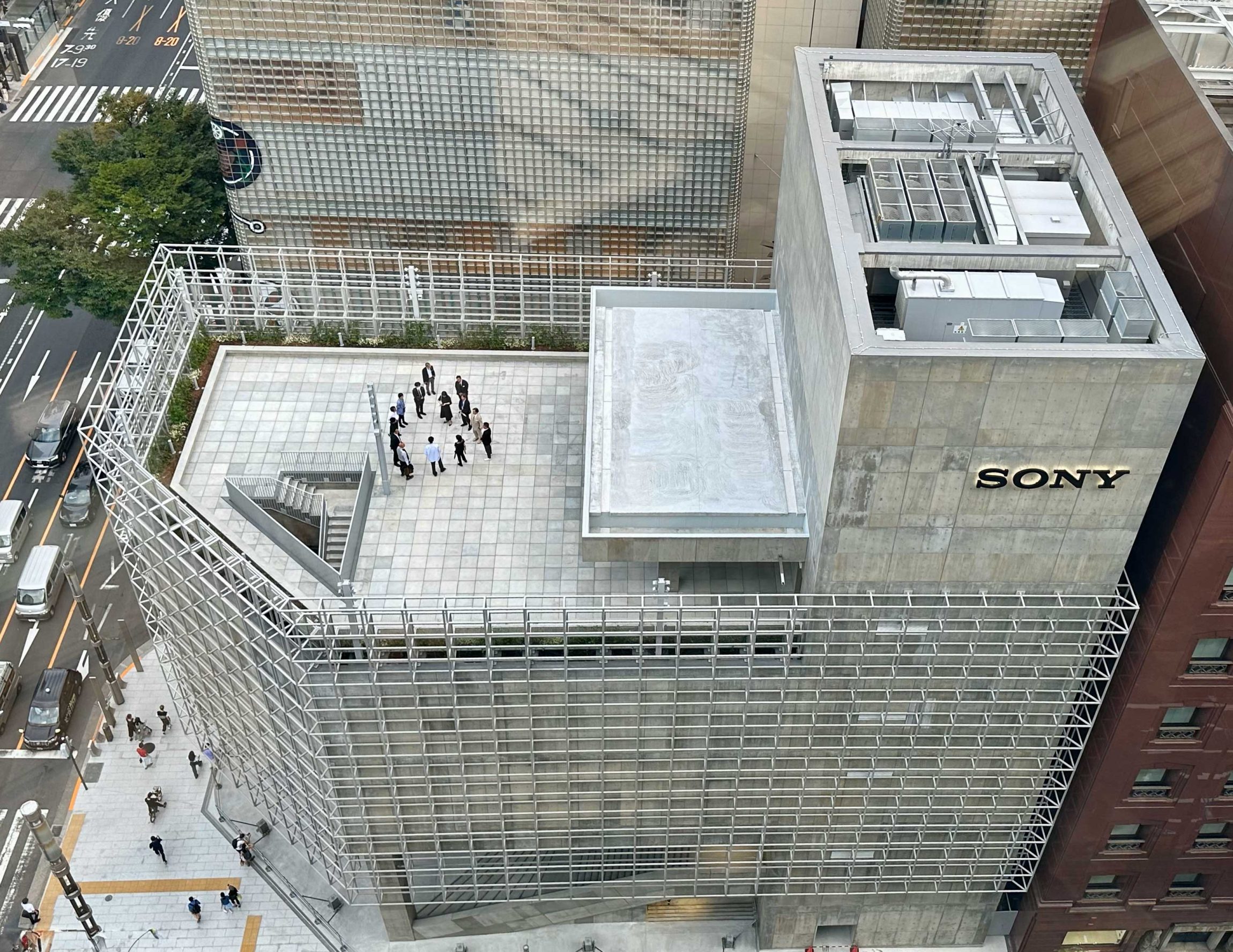
A Storied Past
The Sony Building has long been a symbol of modernity and technological advancement in Tokyo. For decades, it served not only as a showcase for Sony’s latest innovations but also as a cultural hub, offering diverse experiences from cutting-edge electronics displays to art exhibitions and performances. Its striking architecture made it a beacon in the heart of Ginza, drawing locals and tourists alike.
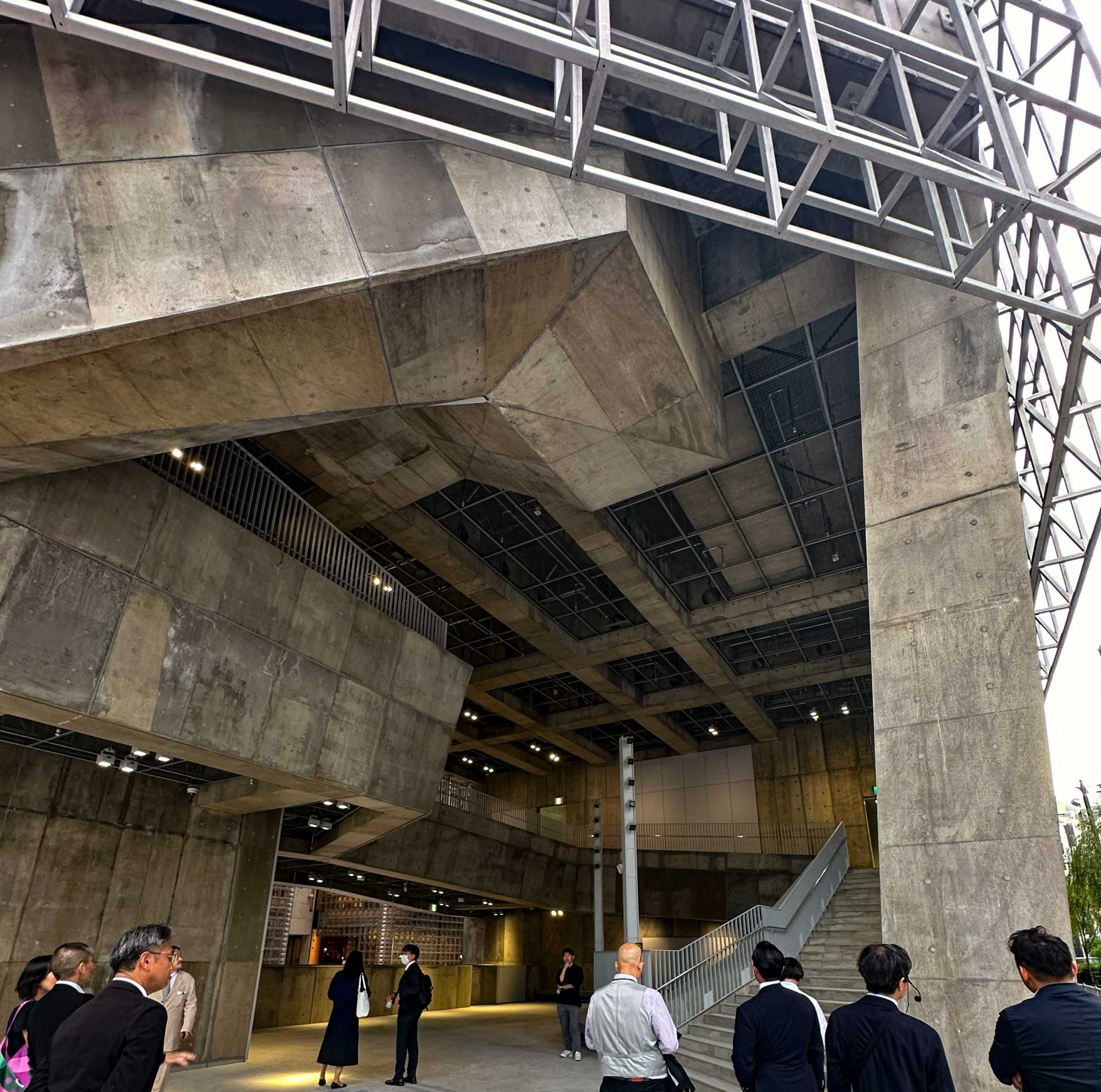
A Vision for the Future
The redevelopment project, led by the renowned architect Nobuo Araki, reimagines the space while honouring its legacy. Fujimoto, known for his innovative and nature-inspired designs, has envisioned the new Sony Park Building as a multifaceted urban park, blending green spaces with interactive experiences reflecting Sony’s creativity and innovation ethos. Unlike a traditional building, this redevelopment emphasises openness and fluidity, allowing the public to engage with the space in novel ways.
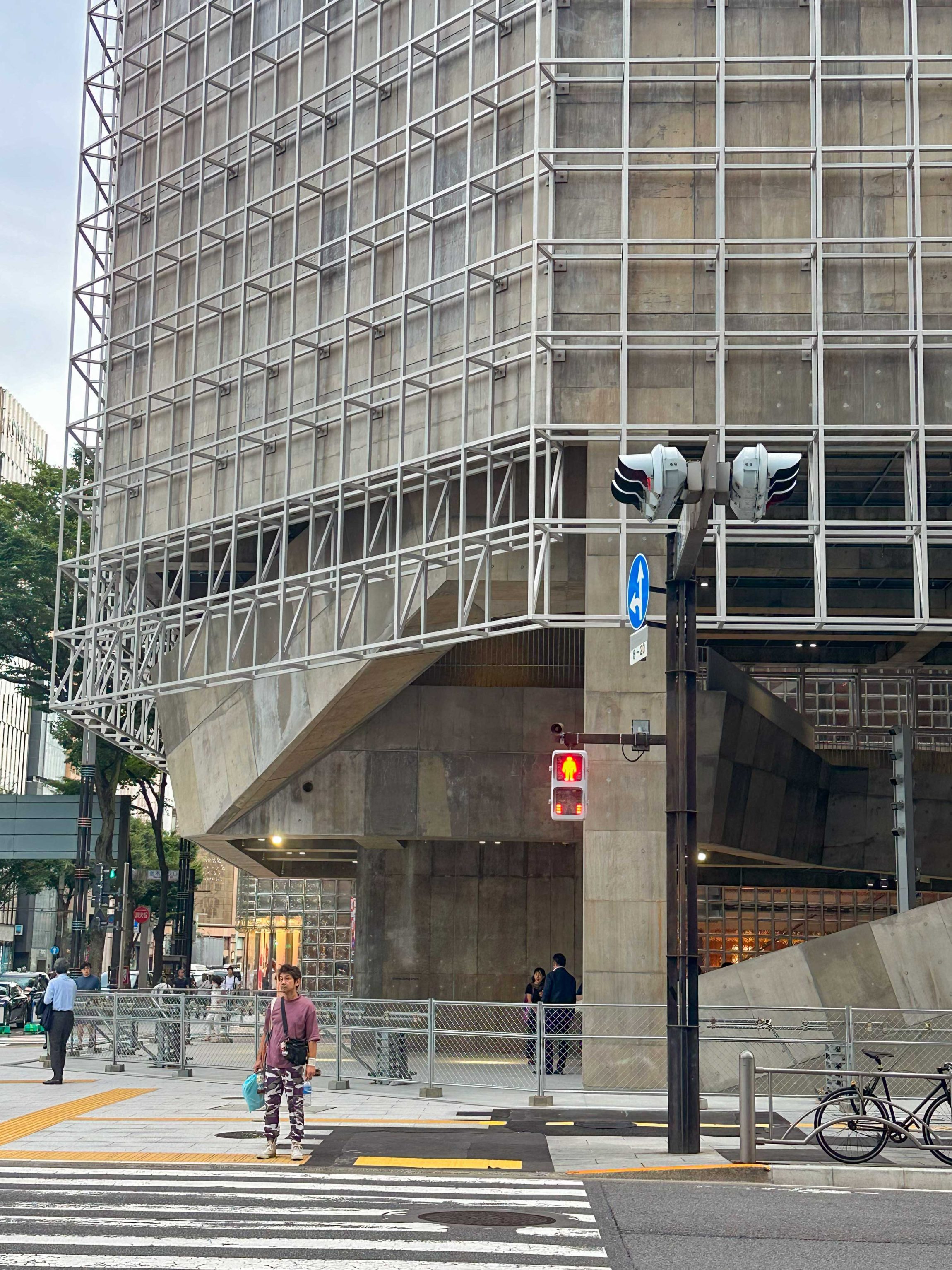
Design Philosophy
The architectural design of the new Sony Park Building is deeply rooted in biophilic principles, aiming to create a harmonious connection between people and nature. The building will feature lush greenery, open terraces, and fluid indoor-outdoor transitions that invite natural light and fresh air into the space. This design not only enhances the well-being of visitors but also aligns with global trends toward sustainable and regenerative architecture. The idea of an ever-evolving brief that feeds from the use of the spaced by the community in one of the busiest corners of Tokyo has successfully thrived through the decades.

A Space for All
True to its roots as a public space, the redeveloped Sony Park Building will offer a wide range of activities and experiences. From art installations and live performances to technology showcases and relaxation areas, the space is designed to cater to a diverse audience. The integration of digital technology will allow for interactive exhibits, bringing Sony’s latest innovations to life in an immersive and engaging manner.
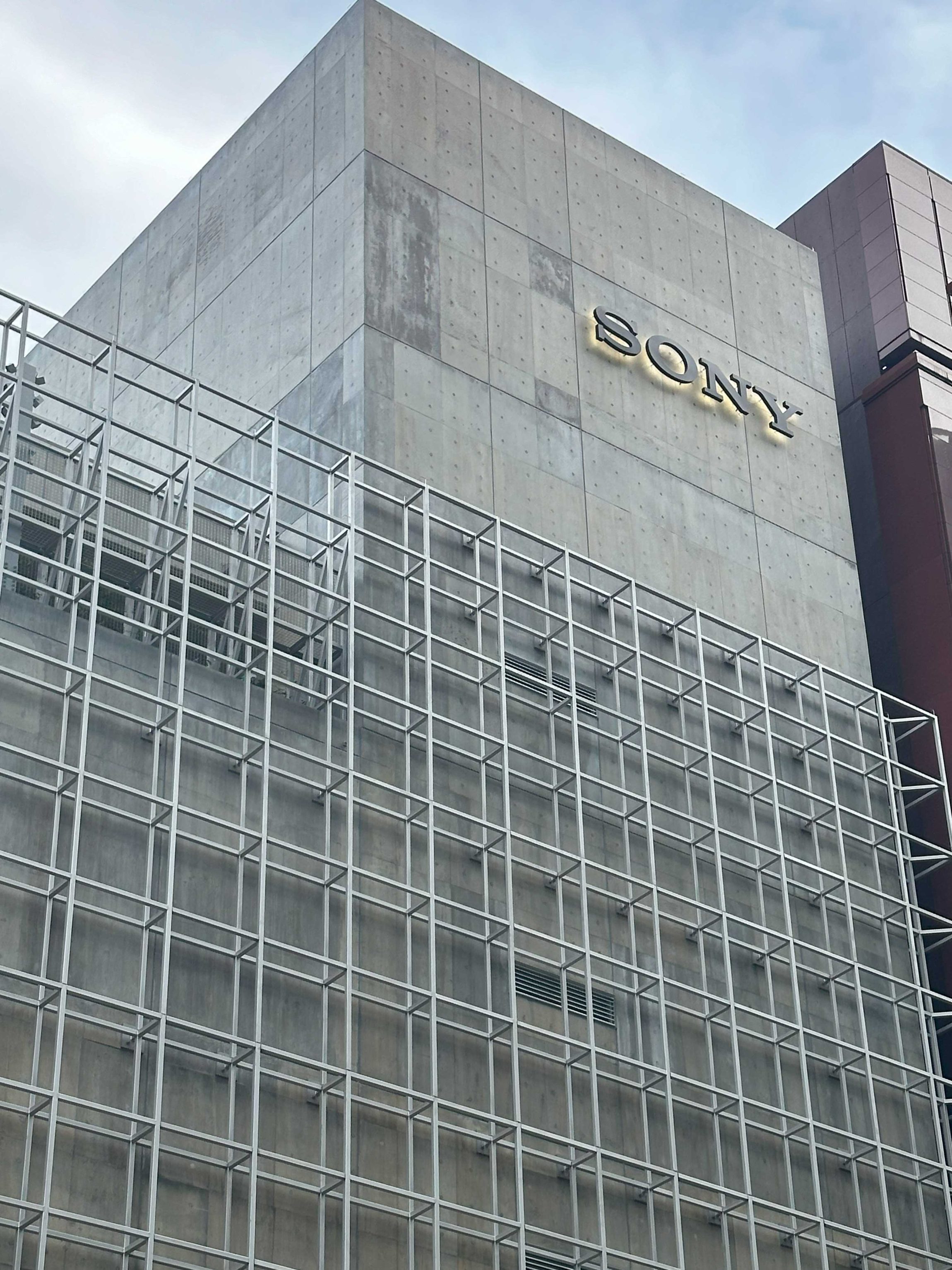
A Green Legacy
Environmental sustainability is a key focus of the redevelopment. The project incorporates eco-friendly materials and energy-efficient systems, reducing the building’s carbon footprint. The extensive use of greenery not only enhances the aesthetic appeal but also contributes to urban biodiversity, creating a small yet significant green lung in the bustling Ginza district. The corner of the Sony Building facing the Sukiyabashi Crossing in Ginza used to be home to the Sony Square, a public space of 33 square meters where Sony hosted seasonal events, distributing vivid gerbera daisies in the spring, and setting an aquarium to bring a sense of coolness to the town in the summer.
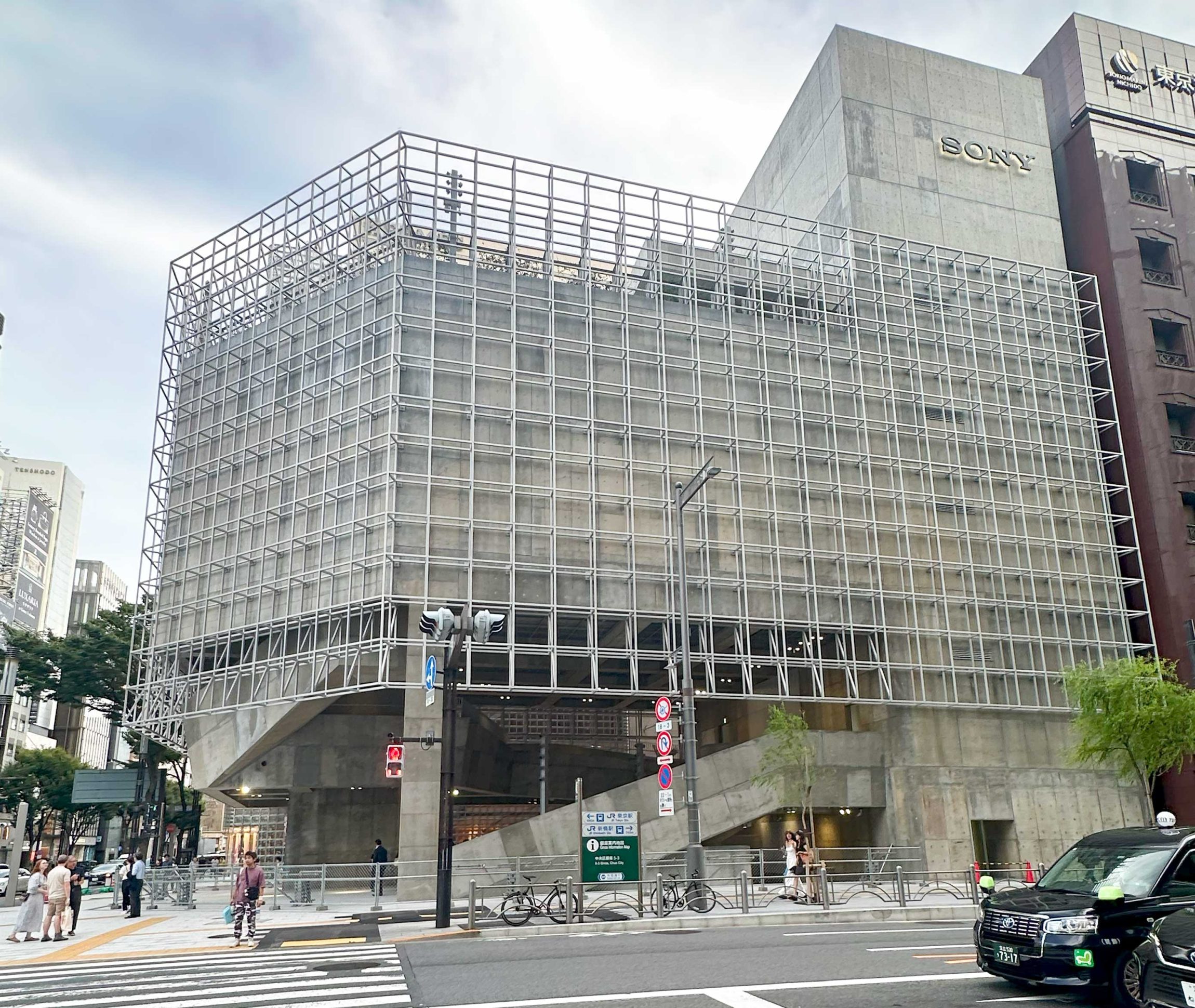
The project underscores the importance of forward-thinking projects in shaping the future of urban design as an ultimate architectural conservation approach. The adoption of the Primary Generator idea of a building that invites casual and programmed public use and retro feeds and learns from it to generate new versions of itself goes to the essence of Japanese conservation approach. The original upper levels of the building were demolished in 2018 and the ground space became an urban park for three years, which in turn informed the design of the new above ground levels. The “designed demolition” and the use of the space during the design process informed Nobuo Araki’s design .
The redevelopment of the Sony Park Building is more than just an architectural project; it is a bold statement about the future of urban spaces in Tokyo. By blending nature, technology, and public engagement, the new Sony Park Building promises to be a landmark that continues to inspire and innovate, much like its predecessor. As Tokyo evolves, this iconic space will remain at the forefront of the city’s ever-changing narrative, a place where the past, present, and future converge in harmony.